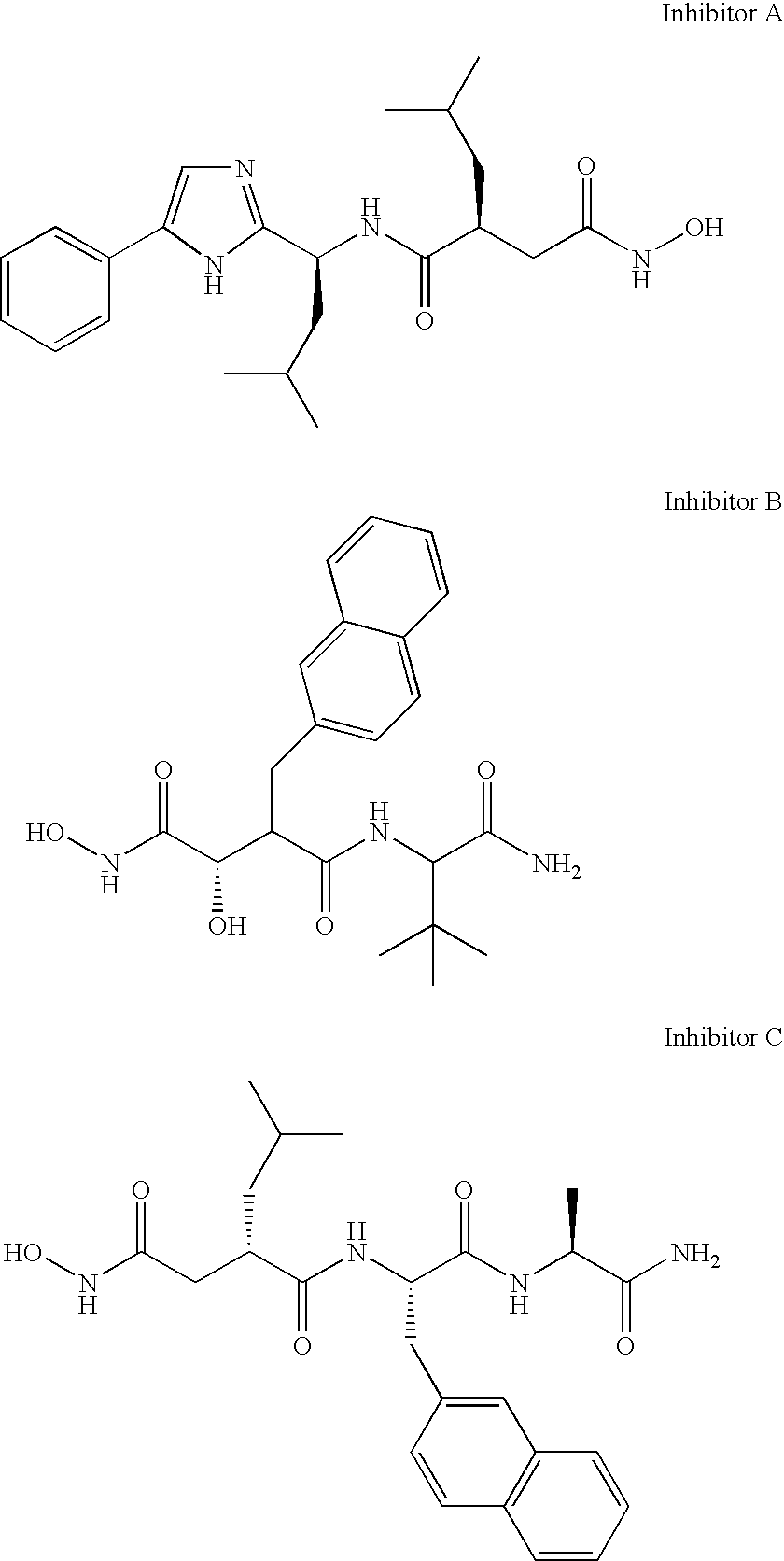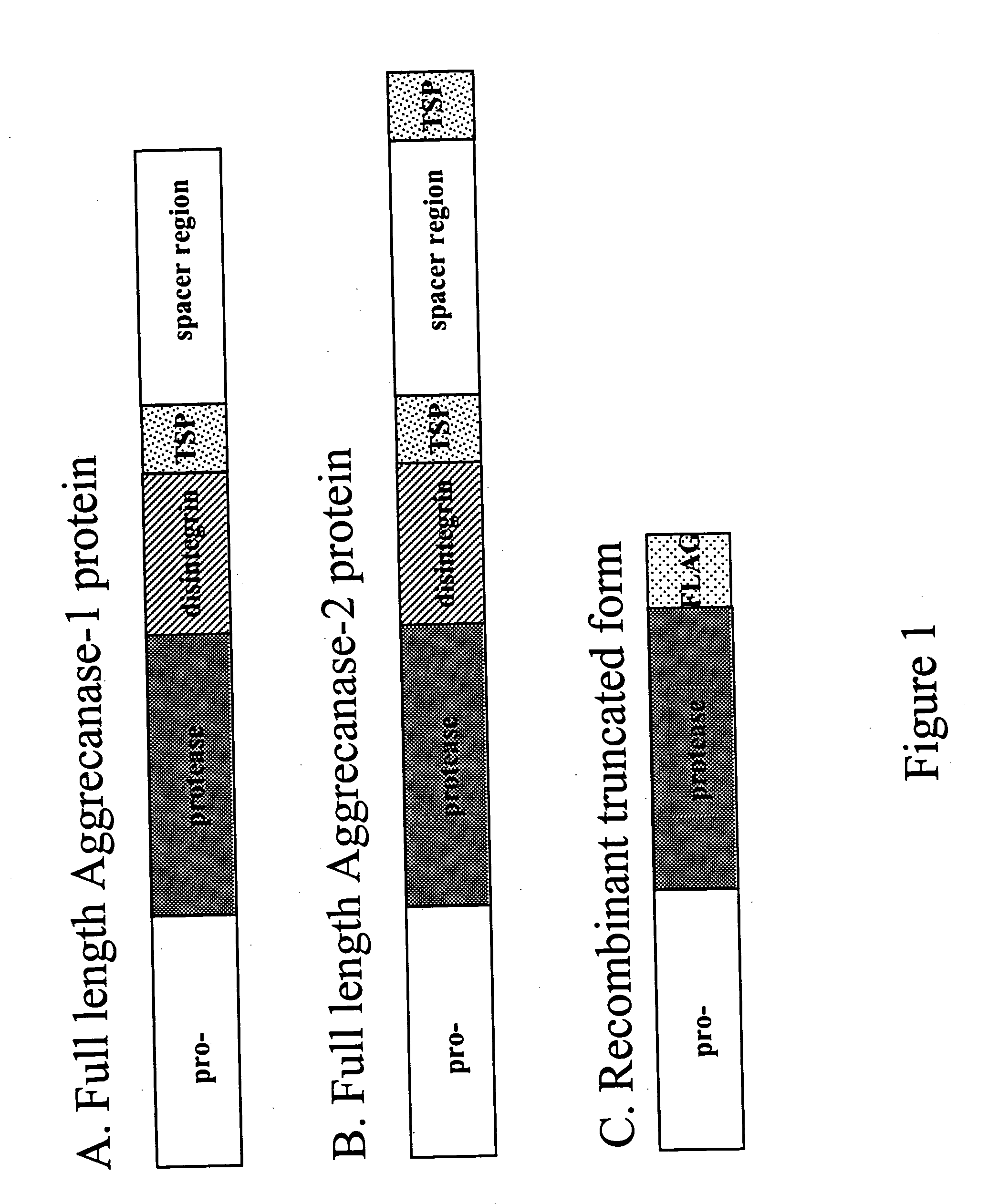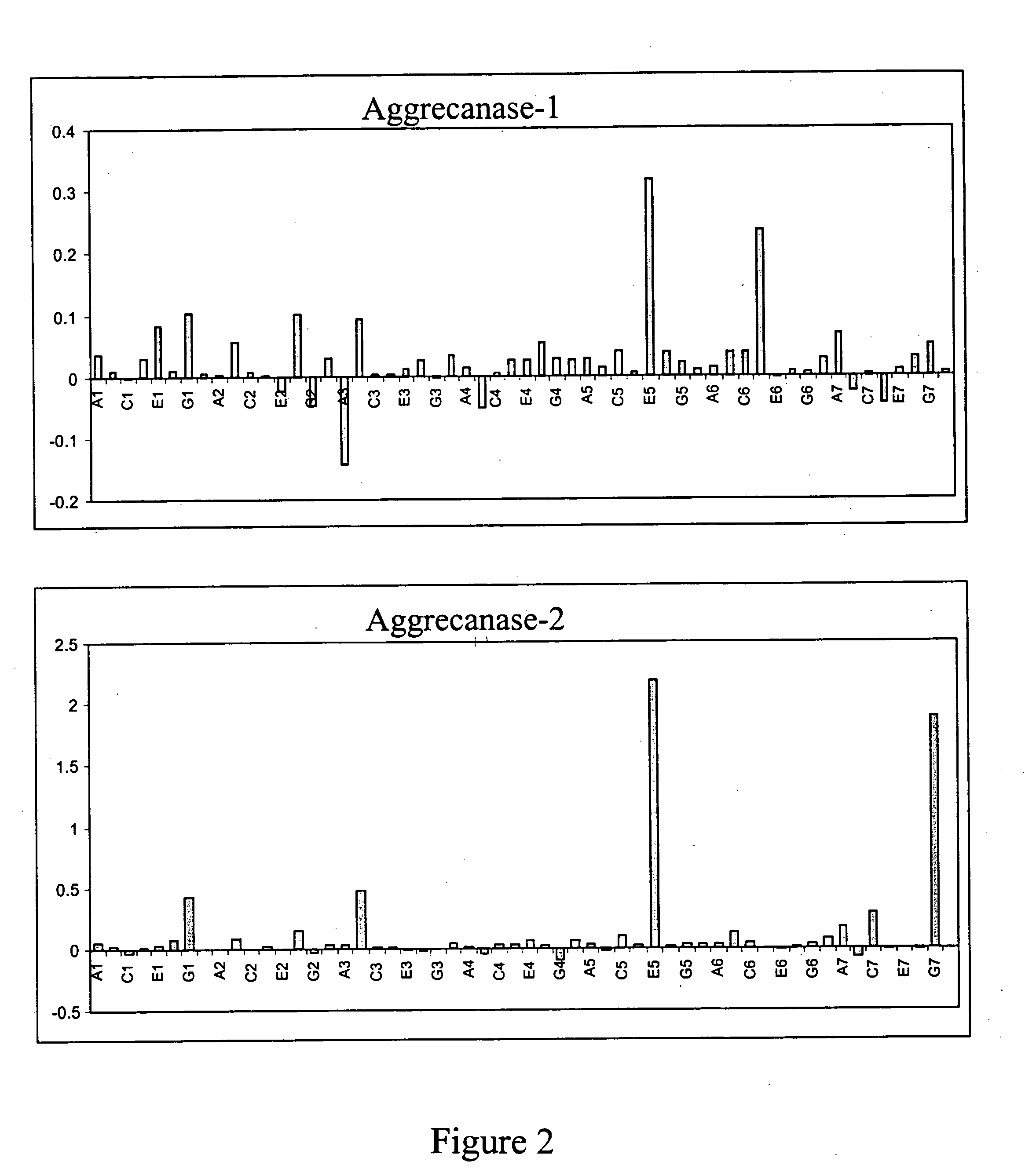Aggrecanase-1 and -2 peptide substrates and methods
a peptide substrate and peptide technology, applied in the field of synthesizing peptide substrates, can solve the problems of short substrates, such as substrates of 20 amino acids in length, that cannot function as suitable substrates for aggrecanase, and achieve the effect of inhibiting aggrecanase enzymatic activity and allowing enzymatic cleavage of peptides
- Summary
- Abstract
- Description
- Claims
- Application Information
AI Technical Summary
Benefits of technology
Problems solved by technology
Method used
Image
Examples
example 1
Generation of Truncated Recombinant Enzyme
[0050] Aggrecanase proteins usually comprise: an N-terminal pro-domain and a metalloprotease domain, followed by the disintegrin domain, cysteine-rich domain, epidermal growth factor repeat, thrombospondin repeats and a spacer region, as illustrated in FIG. 1. For production of biologically active and soluble ADAMTS proteins (Aggrecanase-1 and -2), PCR products containing the pro- and protease domains and a C-terminal FLAG epitope (used for immuno-detection and purification) were cloned into pFastBacl (GibcoBRL) vectors using standard techniques. The DNA sequences of truncated Aggrecanase 1 and 2 used in the methods of this invention are provided as SEQ ID NOS:1 and 2 respectively. The protein sequences corresponding to these DNA sequences are provided as SEQ ID NOS: 8 and 9.
[0051] In order to generate large quantities of protein for biological testing and assay development, Sf9 cells were infected with pFastBac (GibcoBRL) containing the c...
example 2
Fret Assay: Peptide Substrate Screening
[0053] Fifty-six different peptides were synthesized to test for protease activity (see Table 3 below). The peptides included a collection of substrates for other proteases, as well as a number of sequences corresponding to membrane proximal cleavage sites of various proteins postulated to be released by metalloproteases (including those published by (Roghani et al., J. Biol. Chem. 274: 3531-340, 1999) for ADAM9 / MDC9). In order to use the principle of fluorescence resonance energy transfer, or FRET, the peptides were labeled at the C-terminus with Dabcyl and at the N-terminus with Aedans (or vice versa). Thus cleavage of the peptides were monitored by the increase in Aedans fluorescence at 460 nm (excitation 360 nm) as a result of the decrease in proximity of the Dabcyl quencher. The assay was performed by diluting the Aggrecanase-1 (approximately 2.5 to 5 μg of protein, 85 to 167 picomoles, SEQ ID NO:8) or Aggrecanase-2 (approximately 0.5 to ...
example 3
[0059] Aggrecanase-1 (2.5 to 5 μg of protein, 85 to 167 picomoles) was diluted in assay buffer (50 mM HEPES pH 7.5, 10 mM CaCl, 0.1M NaCl, 0.05% Brij-35). Samples were prepared containing putative inhibitors A (Chen et al. Biorg. Med. Chem. Lett. 6(13): 1601-1606, 1996) or B (Bailey, et al. Biorg. Med. Chem. Lett. 9(21): 3165-3170, 1999), shown below, at a final concentration of 7.5 micromolar. The final % DMSO in the assay was 3% and it was determined experimentally that this concentration was not detrimental to the activity of the enzyme. The reaction was initiated by the addition of FasL1 peptide substrate to a final concentration of 225 μM and readings were taken at one-minute intervals, for a total of 200 minutes at room temperature.
[0060] The assay was always performed at enzyme and substrate concentrations where the activity was linearly related to enzyme concentration and where the increase in fluorescence (reaction rate) was linear for at least the tim...
PUM
| Property | Measurement | Unit |
|---|---|---|
| length | aaaaa | aaaaa |
| affinity | aaaaa | aaaaa |
| enzyme activity | aaaaa | aaaaa |
Abstract
Description
Claims
Application Information
 Login to View More
Login to View More - R&D
- Intellectual Property
- Life Sciences
- Materials
- Tech Scout
- Unparalleled Data Quality
- Higher Quality Content
- 60% Fewer Hallucinations
Browse by: Latest US Patents, China's latest patents, Technical Efficacy Thesaurus, Application Domain, Technology Topic, Popular Technical Reports.
© 2025 PatSnap. All rights reserved.Legal|Privacy policy|Modern Slavery Act Transparency Statement|Sitemap|About US| Contact US: help@patsnap.com



